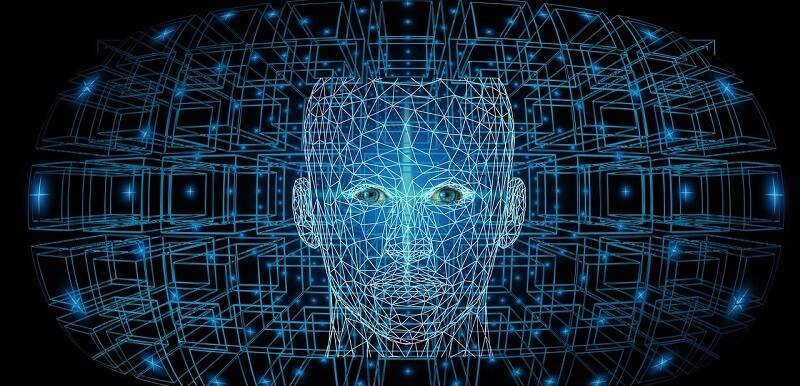The merging of artificial intelligence (AI) and computer vision technology in recent years has transformed the field and opened doors to incredible possibilities. Today, computer vision systems can identify objects, detect facial features, and even interpret emotions with remarkable accuracy. The integration of AI into computer vision has exponentially expanded its capabilities, leading to a wide range of applications across various industries.
Current capabilities of computer vision systems
Computer vision technology has achieved impressive accuracy in identifying objects, detecting facial features, and interpreting emotions. Thanks to AI algorithms, these systems have undergone significant advancements. With deep learning algorithms and neural networks, computer vision has been able to recognize and classify objects with a level of accuracy that was unimaginable just a few years ago. Facial feature detection has also reached astounding levels of precision, allowing for applications in areas such as biometrics and emotion analysis.
The integration of AI into computer vision
The integration of AI into computer vision has allowed for a multitude of applications and extended the capabilities of these systems. AI algorithms enable computer vision systems to learn, adapt, and improve their performance over time, making them more intelligent and efficient. This integration has revolutionized industries such as retail, healthcare, automotive, agriculture, and security.
AI-Powered Computer Vision in Retail
In the retail sector, AI-powered computer vision is being used to monitor inventory levels in real-time, identify shoplifting incidents, and even predict customer behavior. With computer vision technology, retailers can manage their inventory more effectively, ensuring that stock is replenished promptly. Additionally, the ability to detect shoplifting incidents in real-time allows for immediate action to be taken. AI algorithms can also analyze customer behavior, providing insights that can improve business strategies and enhance the overall shopping experience.
AI-Powered Computer Vision in Healthcare
Computer vision technology integrated with AI has made significant strides in the healthcare sector. It is being used to detect diseases in medical images with a level of precision that rivals, and in some cases surpasses, that of human doctors. AI algorithms can analyze medical images, such as X-rays, CT scans, and MRIs, identifying abnormalities and potential diseases. This aids in early detection, leading to more accurate diagnoses and timely treatments.
AI-driven computer vision in the automotive industry
The automotive industry is another area where AI-driven computer vision is making a significant impact. It has enabled the development of self-driving cars, allowing vehicles to navigate roads, identify obstacles, and make split-second decisions. Computer vision systems, backed by AI algorithms, can process real-time data from sensors and cameras, providing a comprehensive understanding of the vehicle’s surroundings. This technology has the potential to enhance road safety, reduce accidents, and improve overall transportation efficiency.
AI-powered drones in agriculture
AI-powered drones equipped with computer vision technology are revolutionizing the field of agriculture. These drones can monitor crop health, identify areas with nutrient deficiencies or water stress, and even detect signs of disease or pest infestation. By capturing high-resolution images of fields, computer vision algorithms analyze the data and provide valuable insights to farmers. This allows for targeted interventions, optimizing crop yield and reducing the need for excessive pesticide or fertilizer usage.
AI-Enhanced Surveillance Systems in Security
In the security sector, AI-enhanced surveillance systems are transforming the way we ensure public safety. These systems can identify suspicious behavior and alert authorities in real-time, assisting in crime prevention and rapid response. By analyzing video feeds, computer vision algorithms can detect abnormal activities, unauthorized access, or potential threats. This technology enhances security measures by providing an extra layer of surveillance and enabling proactive measures to be taken.
The challenge of fairness and transparency in AI
As computer vision systems rely on data for training and learning, ensuring the fairness and transparency of AI algorithms is of the utmost importance. Biased data can lead to inaccurate or unfair outcomes, impacting decision-making processes and potentially perpetuating existing societal biases. Researchers and developers face the task of mitigating bias by carefully curating and diversifying datasets, as well as auditing and monitoring algorithms for potential biases. Striving for fairness and transparency in AI is crucial for building trustworthy and ethically responsible computer vision systems.
The future of computer vision and AI
The continued advancement of AI holds immense potential for the future of computer vision. With ongoing research and development in the field of AI, computer vision systems will continue to evolve and become even more sophisticated. We can expect to see systems that understand and interpret the visual world in ways we can only imagine. As AI algorithms become more refined, computer vision technology will enable us to solve complex problems, improve efficiency across industries, and contribute to a better and safer world.
The future of computer vision is a fascinating topic that is rapidly evolving, thanks to the game-changing role of artificial intelligence (AI). The integration of AI into computer vision has opened up a world of possibilities, impacting industries such as retail, healthcare, automotive, agriculture, and security. From real-time inventory management and disease detection to self-driving cars and AI-powered drones, the applications of computer vision technology with AI are limitless. However, ensuring the fairness and transparency of AI systems remains a critical task for researchers and developers. With the continued advancement of AI, we can expect to see even more sophisticated computer vision systems that can understand and interpret the visual world in ways we can only imagine.

